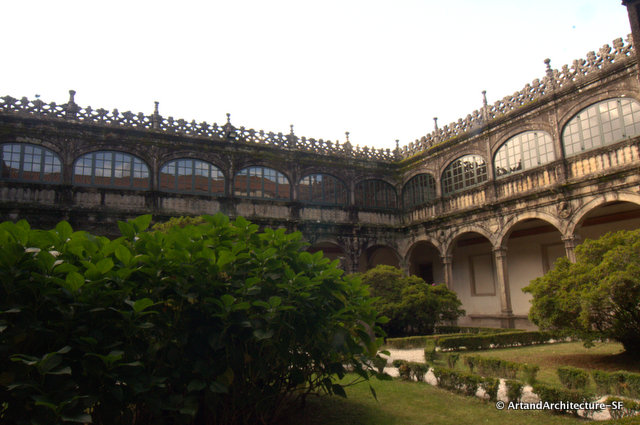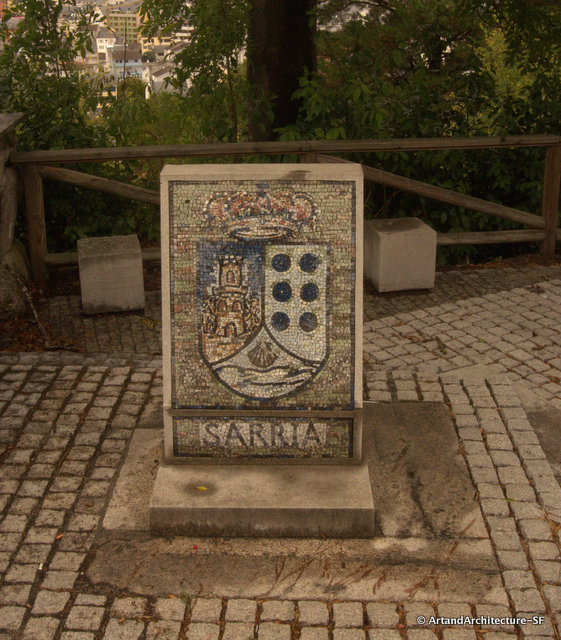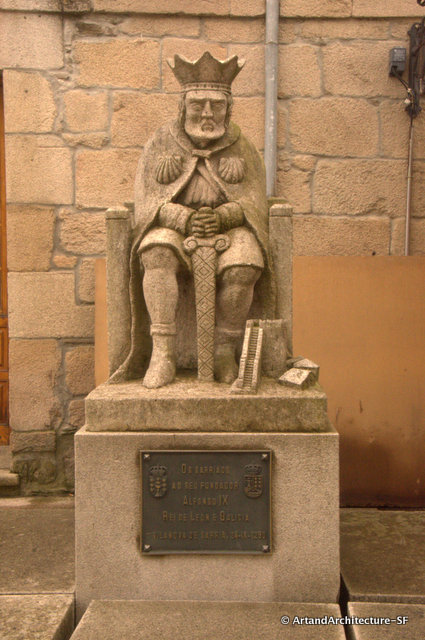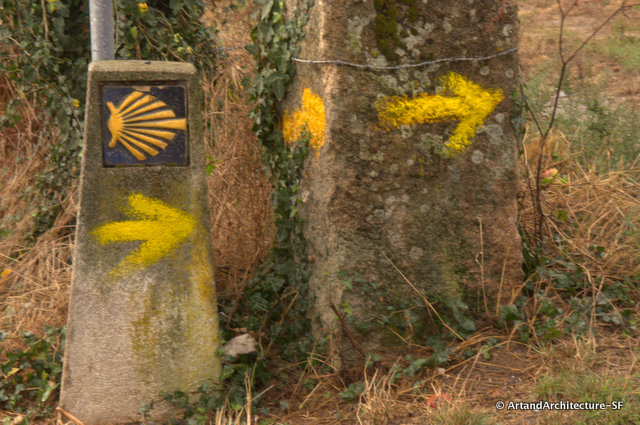September 2013
My dear dear friend Julie Belott asked me a few weeks after Michael passed away if I wanted to hike the Camino de Santiago with her. My first statement was absolutely, my second was What is the Camino de Santiago? These posts, that I wanted to add to my blog are copies of the emails I sent to my mother along the way.
First day and I thought I would let you all know how things are going. I hope to be complete enough so that when you ask me to tell you all about my trip, I will know that you didn’t read all the way to the bottom. I will then put on an obsequious smile and in my mind I will be putting you in a box with Schroeder’s cat. Arrived in Santiago via DFW and Madrid. While Santiago is a lovely town I did not have too much time to explore. I am attaching photo taken from the public garden that is the highest point in town.
 After lunch we headed to the Monasterio de la Magdalena to get our Credencials. The Credencial is a document that identifies the bearer as a pilgrim, you collect stamps along the way as proof of completing the pilgrimage. Once we reach Santiago they will give us a Compostela (certificate of accomplishment) which is written in Latin and personalized saying we hiked at least 100 kilometers of the Camino.
After lunch we headed to the Monasterio de la Magdalena to get our Credencials. The Credencial is a document that identifies the bearer as a pilgrim, you collect stamps along the way as proof of completing the pilgrimage. Once we reach Santiago they will give us a Compostela (certificate of accomplishment) which is written in Latin and personalized saying we hiked at least 100 kilometers of the Camino.Tonight in Sarria we are staying in the King Alphonse IX Hotel. King Alphonse died in Sarria on his pilgrimage in 1230. Sarria is thought to predate the Romans, and there are a lot of fabulous old stone buildings throughout the town.
Everywhere you go you encounter pilgrims, riding the bus they are all along the road and in town they are on every sidewalk and pouring out of hotels and albergos (what we would call youth hostels) Backpacks and hiking boots are de rigueur around here.
A little background. The Camino has always been a religious trek, although now it is considered more a rite of passage. The first guide book to the Camino was written in the 12th century. Everywhere you go you see scallop shells. These were symbolic with a couple of thoughts regarding their meaning. One was that the shell represents the fingers of an open hand symbolizing the good deeds expected of a pilgrim. Another interpretation is that the lines of the shell, which converge at a single point, represent the pilgrimage roads convening in Santiago. As to why Scallop shells, there isn’t any real answer.






